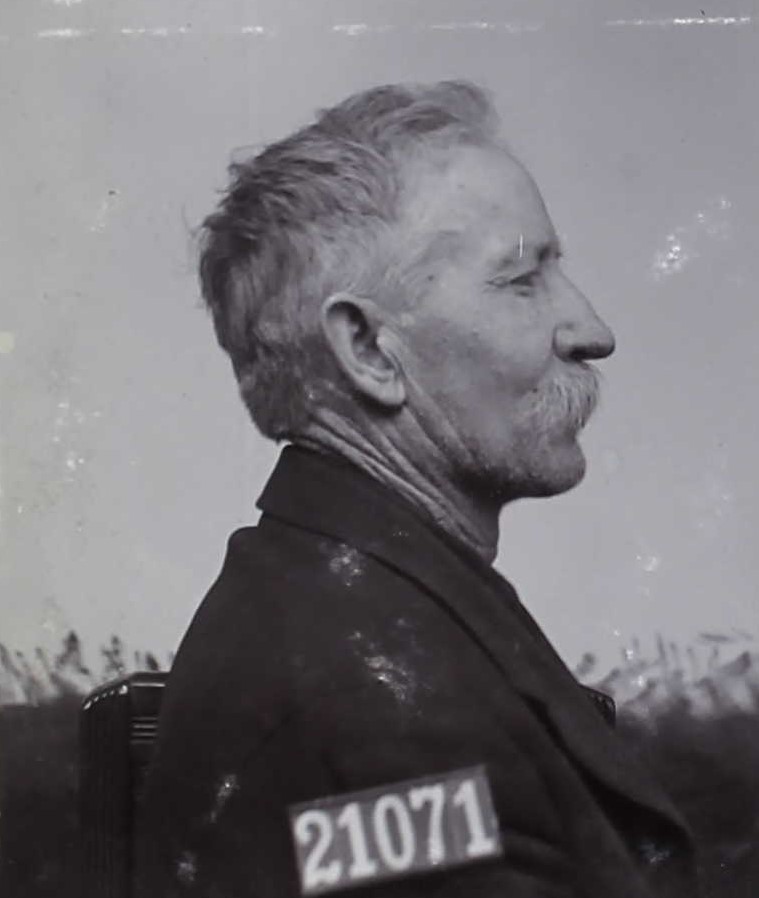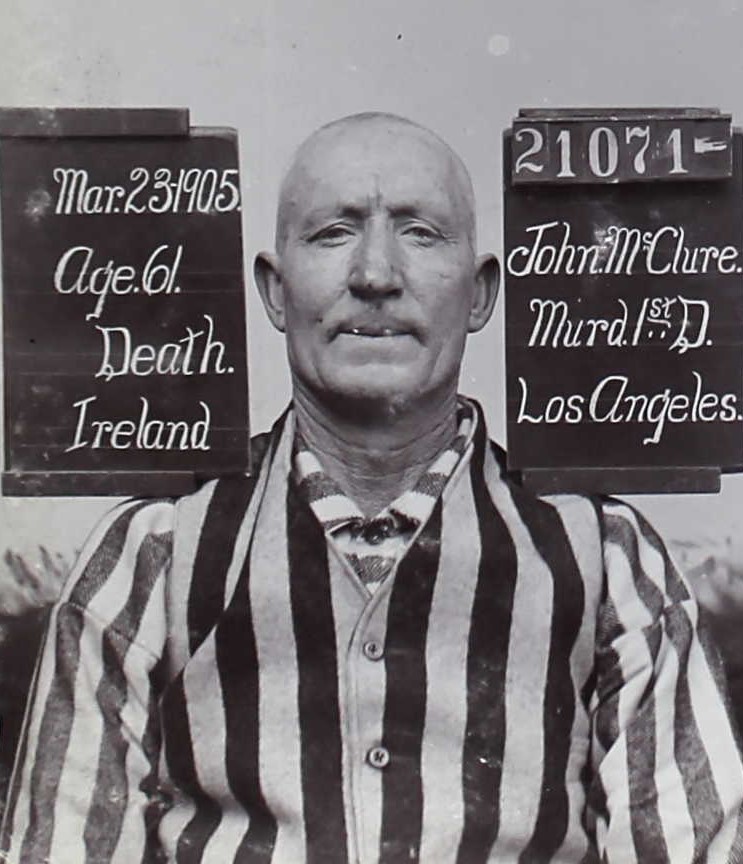Numbered stone markers turn up at prison museum
Two inmate numbers on grave markers reveal the stories of a miner and a young gambler who landed at San Quentin in the early 1900s. The markers showed up at the San Quentin Prison Museum, leaving museum co-founder and volunteer Jeff Craemer a bit stumped.
According to Craemer, the stones are a foot-thick and roughly 2 feet by 3 feet with only numbers on them. They were sitting at the museum when it reopened after a nearly two-year pandemic closure.
“I thought somebody was trying to tell me something,” he joked. “When I came back after two years, there they were. It was mystifying.”
The numbers, 21071 and 30181, were the only clues. After some research, Inside CDCR reveals the stories behind the numbers.
One-legged miner kills two over 15-cent horse halter



The first marker belonged to John McClure, a miner who lost part of his leg. In 1904, he sold a horse and buggy to a Los Angeles livery stable. When he realized he accidentally included an old rope halter, he asked the new owner if he could retrieve it. While the halter held sentimental value, it was only worth about 15 cents. The stable’s owner was happy to oblige but apparently the message didn’t make its way to the stable staff.
For over a week, McClure asked for the halter, each time leaving empty handed and angrier than before. Finally, on December 12, he returned armed with a pistol and knife, demanding the halter be returned. Stable manager S. Tsodicoff taunted him, refusing to give up the halter. He didn’t believe the 61-year-old miner had much gumption left in his 5-foot-6-inch frame.
The victim was gravely mistaken. The first shot found its mark, causing Tsodicoff to stumble across the street and fall dead on the sidewalk. McClure then turned to stable hand Jerry O’Shea. According to reports, McClure shot and wounded the man, then finished him off with his knife. Afterward, McClure hobbled outside, still holding the gun and bloody knife.
McClure calmly met an officer arriving at the scene. Turning over his weapons, McClure said, “Here is my gun and knife. You’ll find two dead ones down at the stable.”
Charged with first-degree murder, McClure was sentenced to death.
He was received at San Quentin on March 23, 1905. After calls for leniency, and petitions to the governor, his sentence was commuted to life in prison.
McClure died September 28, 1926, at 81 years old. He was buried in the San Quentin Cemetery, marked only by the number 21071.
Gunfight erupts as gambler accuses another of cheating
A 1916 San Francisco card game ended with one dead and three fleeing the scene in a hail of gunfire.

The quarrel began over $80, a hefty sum in 1916. In today’s value, it would be over $2,100.
The trouble started in room 15 of the Pullman Hotel, 301 Columbus Avenue. A night of poker and booze ended in a brawl. Jose Rodriguez of Santa Rosa, Jose Diaz and Alfonso Lopez caused enough ruckus to draw the attention of hotel proprietor Gustav Gillard. Locking them in their rooms, Gillard left to summon police.
Reaching the base of the stairs, Gillard heard a gunshot. A man named Ducreat, a fellow hotel owner, was dead after trying to break up the fight.
Shooting to clear a path, the men ran onto Columbus Avenue, then split up. Diaz and Lopez ran toward Broadway and Kearny, where they were met by police. With revolvers ready, officers George Ewing, Mark King and Henry Smith ordered them to stop. The fleeing pair instead opened fire, hitting Officer Smith in the leg. Officer King shot Diaz at Pacific and Kearny.
Bystander O.M. Ratto, 58, caught a stray bullet in the back, passing through his abdomen.
“The battle waged for 15 minutes in the street,” newspapers reported. “The bone in (Officer Smith’s) leg is shattered. The wound is serious.”
Lopez and Rodriguez were apprehended later.
Rodriguez, 22, was sentenced to life at San Quentin. He was received December 27, 1916, and assigned number 30181.
A decade later, he applied for parole but was denied. In 1933, Rodriguez passed away at 39 years old. He was buried in the San Quentin Cemetery, identified by a numbered grave marker.
Learn more about California prison history.
Follow CDCR on YouTube, Facebook, X (formerly Twitter). Listen to the CDCR Unlocked podcast.
